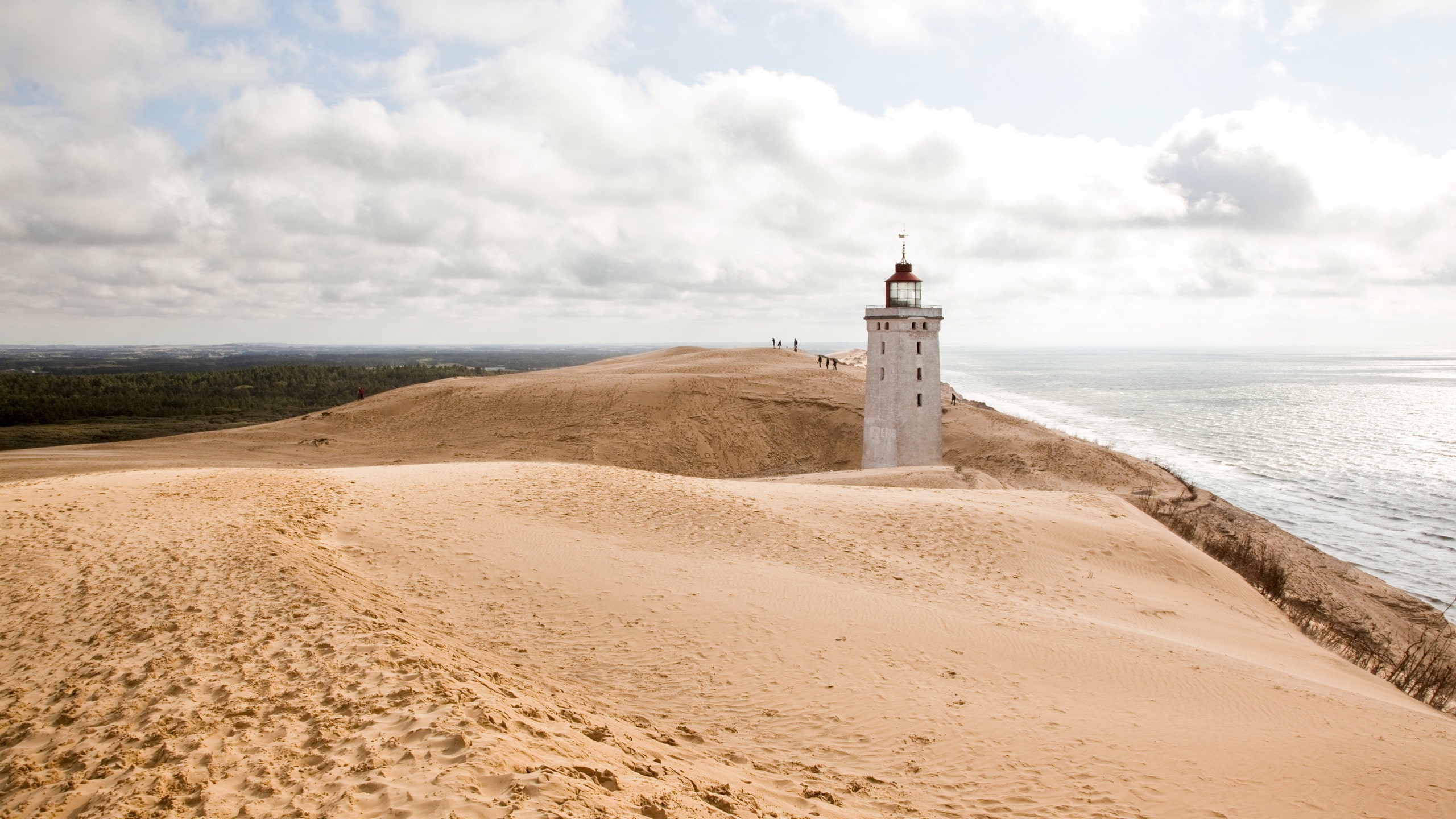This week, Denmark delighted the internet when it put the historic Rubjerg Knude lighthouse on wheels and rolled it away from the eroding coastline to safety. But why—and more importantly, how—did this happen?
The answer involves a generous government, a gunpowder room, and an ingenious local citizen who wanted to protect his town's history.
The Rubjerg Knude lighthouse in Northern Denmark was erected in 1899, 200 meters in from the coast. More than a century later, in the 2000s, that distance had shrunk to just six meters. Kjeld Pedersen, a local mason, saw what was happening and pitched an artful fix to the Danish government: putting the lighthouse on rollerblades, and ever so slowly—technically, 0.001 miles per hour—wheeling it 80 meters inland to safety. The government was reassured by the fact this had been done once before (albeit on a much smaller scale) with a gunpowder repository in the nearby town of Skagen, and allocated 5 million kroner ($750 million) to save it.
On Tuesday, Pedersen pulled off his grand feat. But don't expect him to sign on for any more such projects: "It’s been overwhelming for him." says Visit Denmark's Nina Grandjean Gleerup. "I think he’s told Denmark 'Don’t use me any more', because of all the attention!"
Gleerup says it's characteristic of this part of her country to pull off such an idea. The two nearest small towns to the lighthouse, Løken and Lønstrup, are gorgeous old fishing centers, where a creative spirit thrives in the coffee shops and galleries. Løken has wide, perfect beaches, and is famous for its candy-makers and the beachfront shacks, while Lønstrop is known for its wild nature (and the fact you can legally drive on the beach).
Gleerup also notes that Pedersen typified the humble spirit of the towns. When asked if he was nervous about the feat, he responded that he wasn't, because he knew he had done the best he could.
Visiting the lighthouse, and these towns yourself, is incredibly easy. The nearest airport, Aalborg, is a one-hour flight from Copenhagen, followed by a one-hour drive to reach the rugged coastline and its majestic views. Gleerup recommends that when you visit, you also take time to drive to Skagen, the most Northern city in Denmark, where two oceans—Skagerak and Kattegat—collide. The light is so magnificent here that an entire school of painting (the Skagen painters) emerged from the town.
You may want to take your finest clothing with you, too, as Skagen in known for its upscale clientele—even the Danish royal family has a beach house there.

